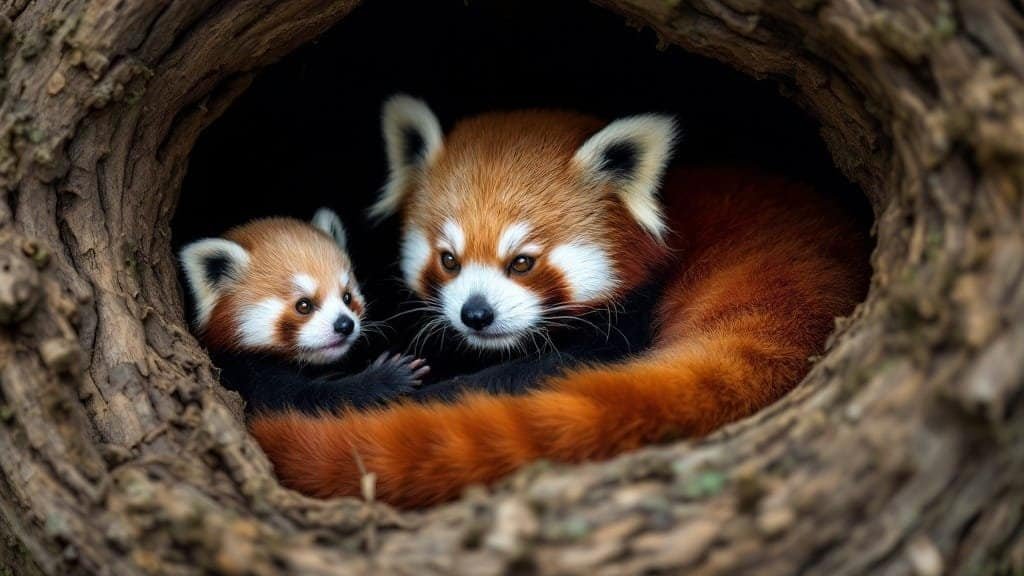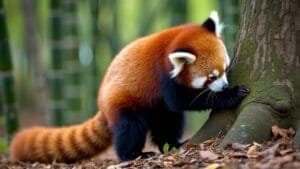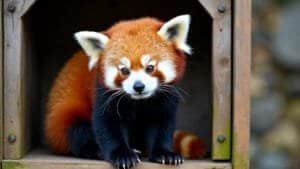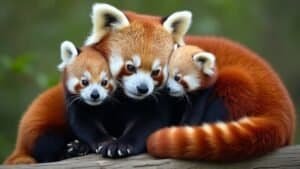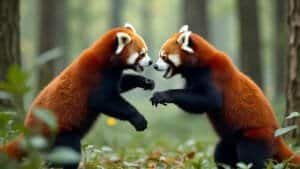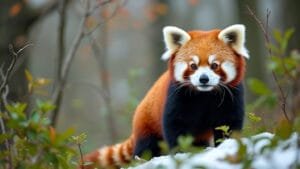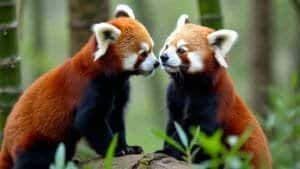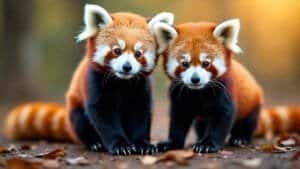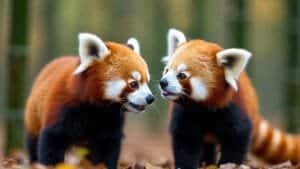Red panda cubs spend their early months under the care of their mother, but at what point do they become independent? These small, tree-dwelling mammals follow a fascinating growth process, from being completely dependent newborns to self-sufficient juveniles. Understanding their development sheds light on their survival strategies in the wild
In this article, we will explore how long red panda cubs stay with their mother and the key milestones they reach before becoming independent. We’ll discuss their early stages of growth, how they learn essential survival skills, and the environmental factors that influence their transition to independence. By the end, you’ll have a deeper understanding of the unique journey red panda cubs take from birth to self-sufficiency
How Long Do Red Panda Cubs Stay With Their Mother?
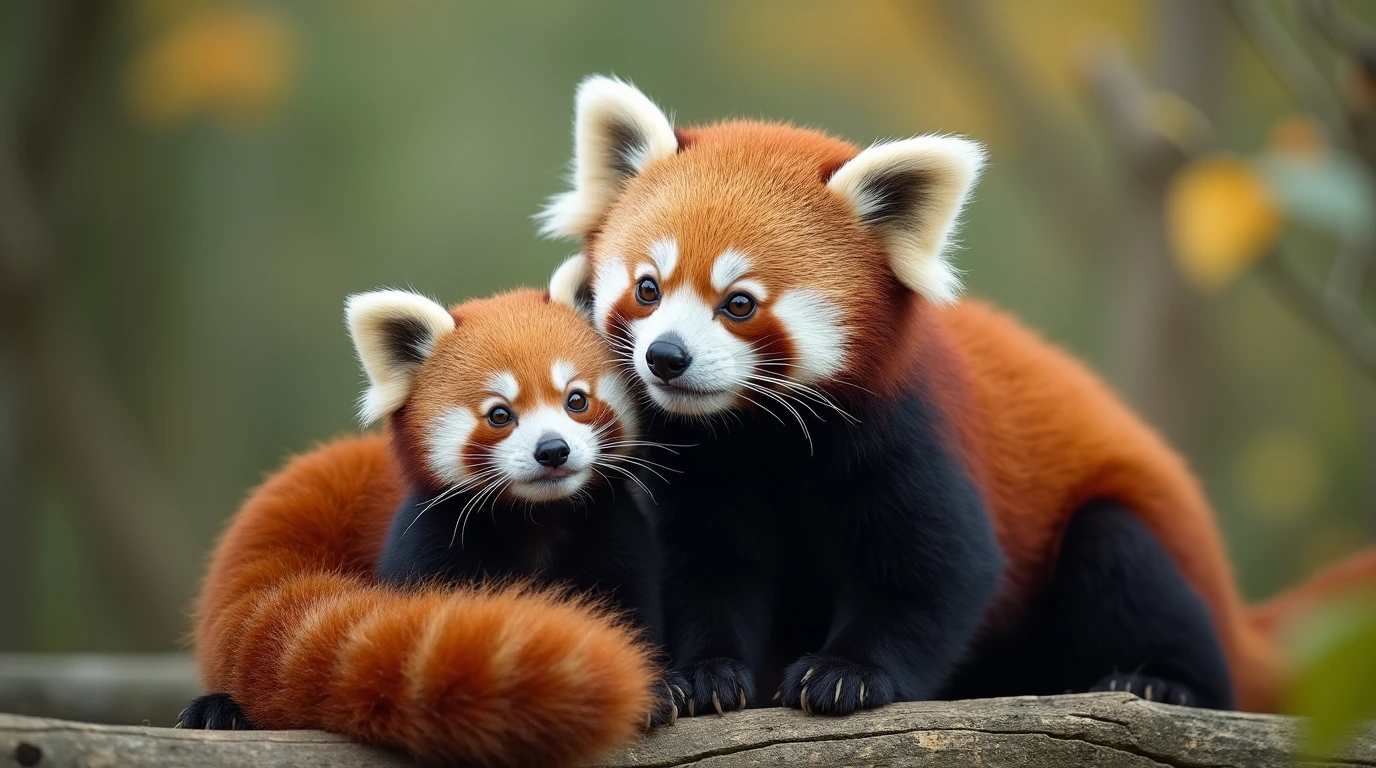
Red panda cubs undergo a remarkable development process before reaching independence. Born completely helpless, they rely on their mother for food, warmth, and protection in the early months of life. As they grow, they gradually develop the skills needed to survive on their own. But exactly how long do they stay with their mother before becoming independent? Let’s take a closer look at the different stages of their development and when they start exploring the world on their own
The Early Stages of Red Panda Cub Development
Red panda cubs are born in the summer months, typically between June and August, after a gestation period of around 134 days. At birth, they are blind, deaf, and covered in thick gray fur, weighing only about 3.5 to 4.6 ounces (100-130 grams). Their mother gives birth in a carefully prepared nest made of leaves and moss, usually located in the hollow of a tree or a rocky crevice
During their first few weeks, cubs remain in the den, relying entirely on their mother for warmth and nourishment. They open their eyes at around 18 days old, but their mobility is still limited. By the time they are one month old, they begin to develop their reddish fur, resembling the appearance of adult red pandas. However, they remain inside the nest, only starting to venture outside at around three months old
At this stage, the mother frequently moves them between different nesting sites, likely to protect them from predators and parasites. This behavior has been observed in both wild and captive red pandas, indicating that it is a natural survival instinct. The cubs continue to nurse for about 13 to 22 weeks, gradually transitioning to solid food
How Long Cubs Rely on Their Mother for Survival
Red panda cubs remain highly dependent on their mother for the first six months of life. Unlike some other mammals, red panda fathers do not participate in raising the young, leaving the mother to handle all aspects of care. Cubs follow their mother closely, learning essential survival skills such as climbing and foraging
By four to five months, cubs start eating bamboo, their primary food source, although they still supplement their diet with their mother’s milk. As they grow, their agility improves, and they begin climbing trees more confidently. However, they still rely on their mother for protection, as their small size makes them vulnerable to predators like snow leopards and martens
At around eight months old, cubs become more independent, spending longer periods away from their mother. By ten to twelve months, they are fully weaned and start establishing their own territory. At this stage, they are considered juvenile red pandas, capable of surviving on their own. However, complete independence varies depending on environmental factors and individual development
When Red Panda Cubs Start Exploring on Their Own
The transition to independence is a gradual process for red panda cubs. Unlike some species that experience abrupt separation, red panda mothers allow their young to explore at their own pace. As they grow more confident, they begin to roam farther from the nesting area, testing their climbing and foraging skills without direct supervision
By twelve months old, most red panda cubs leave their mother’s side, marking the beginning of their independent life. However, some cubs, particularly females, may remain near their mother’s home range for a little longer. Males are more likely to disperse to new territories to avoid competition
Red pandas reach full maturity at 18 months to 2 years old, at which point they become capable of reproduction. This marks the final stage of their development, completing their transition from dependent cubs to fully independent adults
For more insights into the development and life cycle of red pandas, you can refer to the Smithsonian National Zoo’s article on red panda behavior, which explores additional details about their survival strategies
How Red Panda Cubs Become Independent
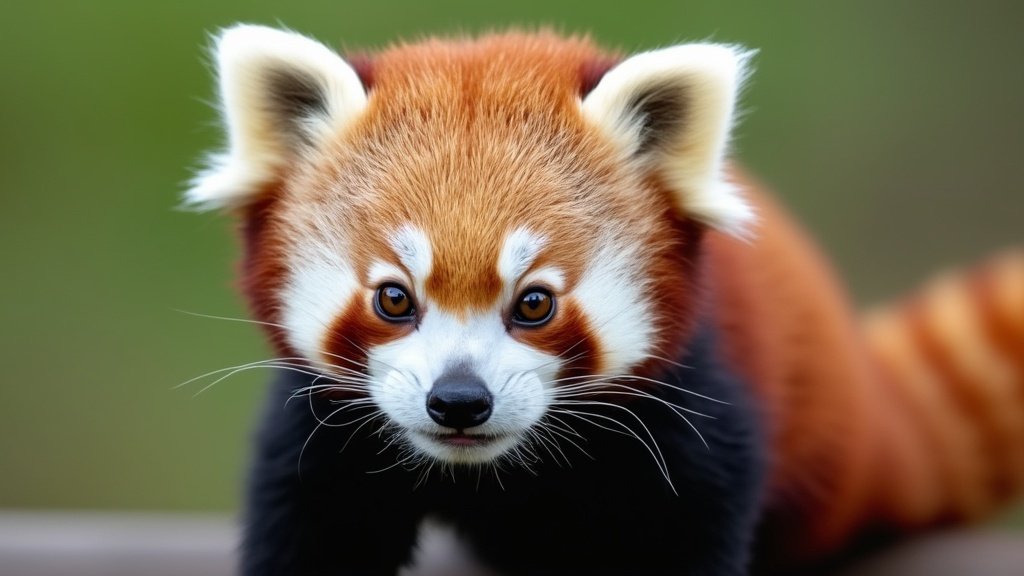
Red panda cubs do not gain independence overnight—it is a gradual process that involves learning essential survival skills from their mother. From foraging for bamboo to mastering climbing techniques, these young cubs spend months developing the abilities they need to thrive in the wild. Their transition to independence is influenced by both biological factors and environmental conditions
Learning Survival Skills from Their Mother
In the wild, red panda mothers play a critical role in teaching their cubs how to navigate their environment. During their first few months, cubs follow their mother closely, observing her behaviors and mimicking them over time. One of the first skills they learn is climbing, which is essential for escaping predators and finding food. Initially, cubs are clumsy climbers, but by the time they reach four to five months old, their balance and grip improve significantly
Another key survival skill is foraging. Red pandas primarily eat bamboo, but their diet also includes berries, fruits, insects, and small mammals. Cubs begin experimenting with solid food at three to four months old, but it is through watching their mother that they learn which plants are safe to eat and how to strip bamboo leaves efficiently. By six months old, they can locate and consume food on their own, though they may still nurse occasionally
Red panda mothers also teach defensive behaviors. When sensing danger, they may make warning calls, stand on their hind legs to appear larger, or quickly climb high into the trees. Cubs imitate these actions, gradually learning how to respond to threats. This training is essential for survival, especially since red pandas are preyed upon by snow leopards and martens
When Cubs Start Eating Solid Food and Hunting
The transition from milk to solid food is a key milestone in a red panda cub’s journey to independence. Cubs begin nibbling on bamboo around three months old, though they still depend on their mother’s milk for nutrients. By five to six months, their primary diet consists of bamboo leaves and shoots, supplemented by fruits and insects. Unlike carnivorous relatives in the mustelid family, red pandas have adapted to a highly fibrous diet, requiring them to spend up to 13 hours per day eating
While red pandas are not hunters in the traditional sense, they do develop foraging strategies as they mature. Cubs learn to locate food sources by observing their mother and experimenting with different plant materials. As they grow, their digestive system becomes more efficient at processing bamboo, allowing them to rely entirely on solid food by the time they are six to eight months old
Environmental Factors That Influence Cub Independence
Several environmental factors can affect when a red panda cub becomes fully independent:
Food Availability: If bamboo is abundant, cubs may grow faster and reach independence sooner. However, in years when bamboo forests experience die-offs, cubs may struggle to find enough food on their own
Predation Risk: In areas with high predator presence, cubs may stay close to their mother for a longer period before fully venturing out
Climate Conditions: Red pandas inhabit temperate forests with cold winters. Cubs born just before winter may rely on their mother for warmth and food longer than those born earlier in the year
Sex Differences: Male cubs typically disperse farther than females, sometimes traveling several miles to establish their own territory. Female cubs are more likely to remain near their mother’s home range
By the time they are 12 months old, most red panda cubs are ready to live independently, though some may linger near their mother’s territory for a short time. Full maturity is reached between 18 months and 2 years, at which point they can reproduce and establish their own home range
For additional insights into red panda reproduction and cub development, you can explore the San Diego Zoo Wildlife Alliance Library’s article on red panda reproduction, which provides a deeper look into their early life stages
How Red Panda Cubs Transition to Full Independence

The journey from birth to full independence is a gradual and complex process for red panda cubs. While they begin exploring their environment around three months old, true independence does not come until they are at least one year old. Several factors, including maternal care, habitat conditions, and survival skills, play a role in determining when a cub can fully live on its own
The Final Stages of Separation from the Mother
Red panda cubs typically remain close to their mother for 8 to 12 months, slowly reducing their dependence on her. Unlike some mammals that experience an abrupt separation, red panda cubs leave in a more gradual manner. Around six to eight months old, they start spending longer periods away from the mother, learning how to navigate their habitat independently. By 10 to 12 months, the mother may begin discouraging close contact, signaling that it is time for the cubs to establish their own territory
The separation process varies depending on the cub’s sex. Male cubs are more likely to disperse to new areas, sometimes traveling several miles to find an unoccupied territory. Female cubs, on the other hand, are more likely to settle near their mother’s home range. This behavior helps maintain genetic diversity while allowing some familial groups to remain loosely connected
Challenges Cubs Face After Leaving Their Mother
Once a red panda cub is independent, it must navigate the many challenges of survival on its own. Some of the biggest obstacles include:
Finding a Stable Food Source: Young red pandas must locate bamboo-rich areas and adapt to seasonal changes in food availability. Since bamboo makes up about 95% of their diet, a shortage can force them to search for alternative food sources such as fruits, acorns, and insects
Avoiding Predators: Without their mother’s protection, young red pandas must rely on their learned skills to evade predators. Climbing remains their best defense, allowing them to escape threats from ground-dwelling hunters like snow leopards and martens
Establishing a Territory: Young red pandas use scent marking to claim their territory, rubbing their anal glands and urine on trees and rocks. Males must often travel farther to find unclaimed land, while females may remain in a familiar range
Despite these challenges, most red pandas successfully transition to an independent life, with survival rates largely dependent on habitat conditions and food availability
Reaching Full Maturity and Reproduction
Although red panda cubs become independent around 12 months old, they do not reach full maturity until 18 months to 2 years old. At this stage, they become sexually mature and capable of reproducing. Mating season occurs between January and March, and after a gestation period of about 134 days, females give birth to one to four cubs in the summer
Red pandas have a relatively solitary lifestyle, so once they reach maturity, they rarely interact with others outside of the breeding season. Their ability to establish and maintain their own territory is a key factor in their long-term survival, as competition for food and space can be intense in some areas
For further details on the red panda’s life cycle and how they reach adulthood, you can explore the WWF’s guide on red panda development, which provides additional insights into their survival and reproduction patterns
